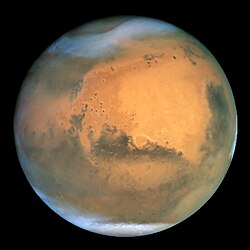PIA22232insightlandingonmars
Original Caption Released with Image: Elysium Planitia, a flat-smooth plain just north of the equator makes for the perfect location from which to study the deep Martian interior. Interior Exploration using Seismic Investigations, Geodesy and Heat Transport, or InSight, is designed to study the deep interior of Mars. The mission seeks the fingerprints of the processes that formed the rocky planets of the solar system. Its landing site, Elysium Planitia, was picked from 22 candidates, and is centered at about 4.5 degrees north latitude and 135.9 degrees east longitude; about 373 miles (600 kilometers) from Curiosity's landing site, Gale Crater. The locations of other Mars landers and rovers are labeled. InSight's scientific success and safe landing depends on landing in a relatively flat area, with an elevation low enough to have sufficient atmosphere above the site for a safe landing. It also depends on landing in an area where rocks are few in number. Elysium Planitia has just the right surface for the instruments to be able to probe the deep interior, and its proximity to the equator ensures that the solar-powered lander is exposed to plenty of sunlight. JPL, a division of Caltech in Pasadena, California, manages the InSight Project for NASA's Science Mission Directorate, Washington. Lockheed Martin Space, Denver, built the spacecraft. InSight is part of NASA's Discovery Program, which is managed by NASA's Marshall Space Flight Center in Huntsville, Alabama. For more information about the mission, go to https://mars.nasa.gov/insight. Image Credit: NASA/JPL-Caltech Image Addition Date:
2018-01-25Relevantní obrázky
Relevantní články
InSightInSight byla robotická meziplanetární sonda americké agentury NASA, určená k výzkumu Marsu. Do kosmu byla vynesena 5. května 2018 pomocí nosiče Atlas V 401 z Vandenbergovy letecké základny v Kalifornii. Po téměř sedmiměsíční cestě, na které sonda urazila ve své přeletové sadě 458 milionů kilometrů, úspěšně přistála na povrchu Marsu 26. listopadu 2018. .. pokračovat ve čtení
















